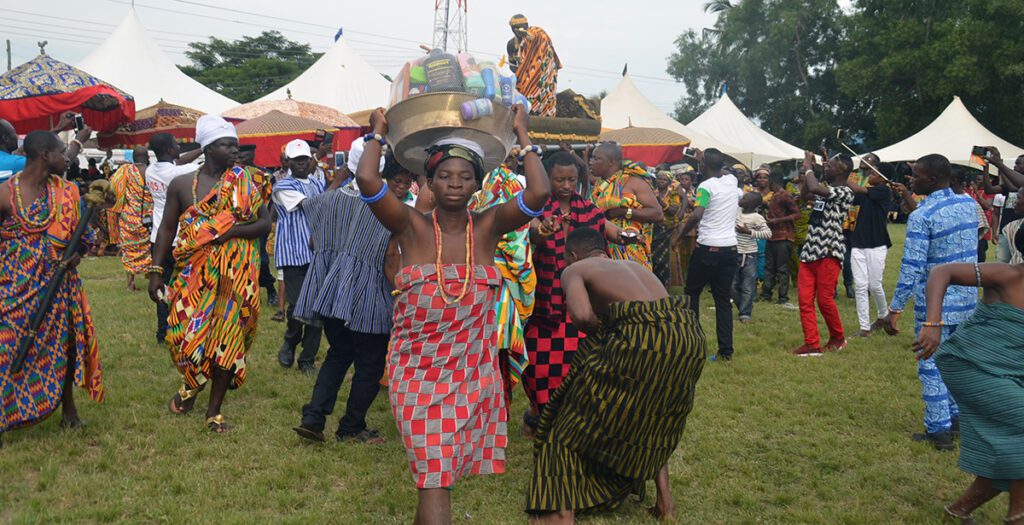THE FESTIVALS
Festivals in Ghana are celebrated for many reasons pertaining to a particular tribe or culture, usually with backgrounds relating to an occurrence in the history of that culture. Examples of such occurrences are hunger, migration, purification of either gods or stools, among others.
Today we will be looking at the festivals of migration celebrated in Ghana.
The first is the Akwantukese Festival, a festival celebrated by the people of New Juaben traditional area in the Eastern Region of Ghana. It is celebrated to mark the journey of the people from Juaben and their allies from their ancestral homes in Asante to establish the New Juaben settlement in the Eastern Region specifically in Koforidua about 135 years ago.
The Hogbetsotso festival (pronounced Hogbechocho) is celebrated by the chiefs and people of Anlo in the Volta region of Ghana. Some major Anlo towns include Anloga (capital), Keta, Kedzi, Vodza, Whuti, Tegbi, Dzita, Abor, Afiadenyigba, Anyako, Konu, Alakple, Tsito, Atiavi, Deʋegodo, and many other villages. The name of the festival is derived from the Ewe language and translates as, “coming from Hogbe (Notsie)”.
Prior to their settling in their present location, they lived in Notsie, a town in present-day Togo.
It is believed that they had migrated from southern Sudan to settle in Notsie. Oral tradition has it that they lived under a wicked king, Togbe Agorkoli, and in order to escape his tyrannical rule, they had to create a hole in the mud wall that surrounded their town. They achieved this by instructing the women to pour all their wastewater into one particular place in the wall. Over time the spot became soft, thereby allowing them to break through the wall and escape. Legend also says that to avoid pursuit and make good their escape, they walked backwards with their faces towards the town so that their footprints appeared to be going into the town.
Various ceremonies are held during the festival. They include a peace-making period in which all disputes are ended with the finding an amicable solution, since it was through, harmony with themselves all through their escape from Notsie, that made their flight ta success. There is also a purification ceremony of the ceremonial stools (where the Ewe believe the ancestral spirits reside) through the pouring of libations.
This is followed by general cleaning where all the villages are swept and rubbish burnt. This cleaning ceremony starts at the Volta River and ends after several days at the Mono River in the Republic of Togo. The climax of the festival involves a durbar of the chiefs and peoples of Anlo. The chiefs dress in colourful regalia and receive homage from their subjects at the durbar grounds.
The Agbadza which is the traditional dance of the people of Anlo is performed vigorously during the grand durbar of the Hogbetsotso festival. It is a way of expressing joy to their ancestors and gods. Agbadza can be performed anywhere, at parties, funerals, and at naming ceremonies.
Read also: All the facts you need to know about Ghana: (3)


